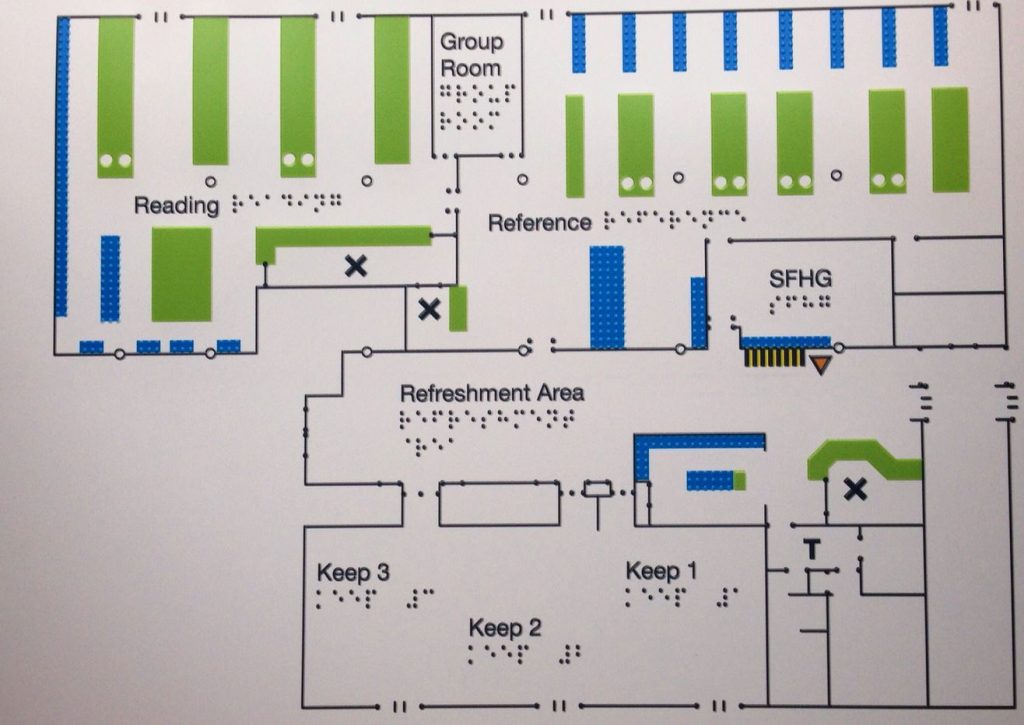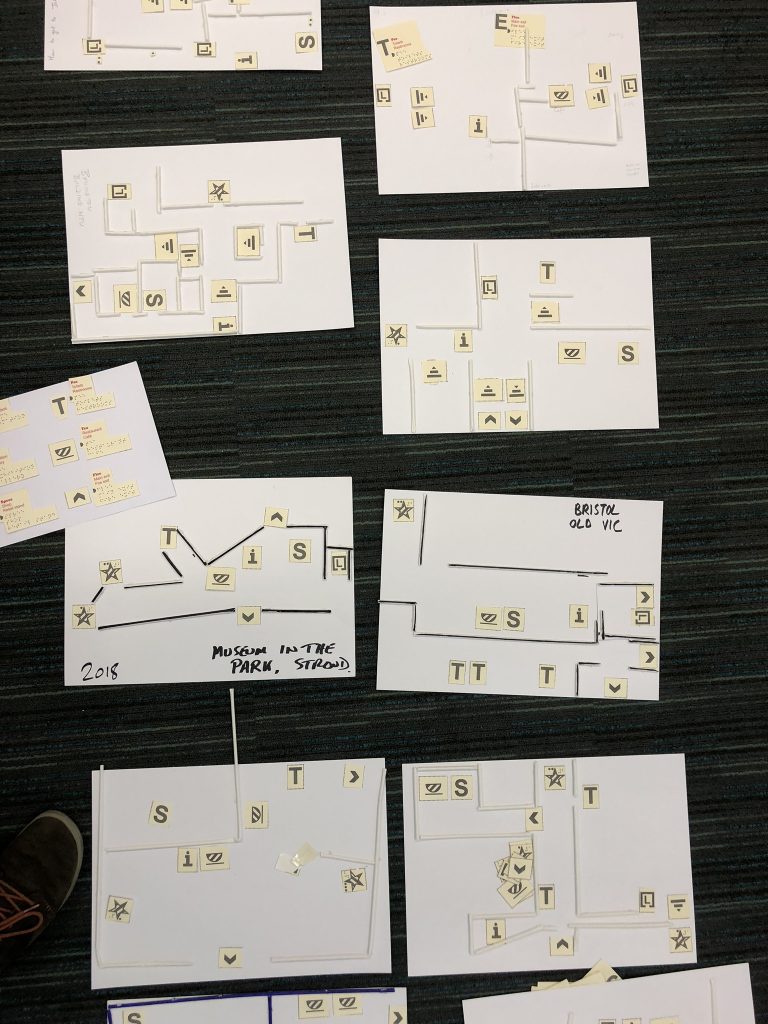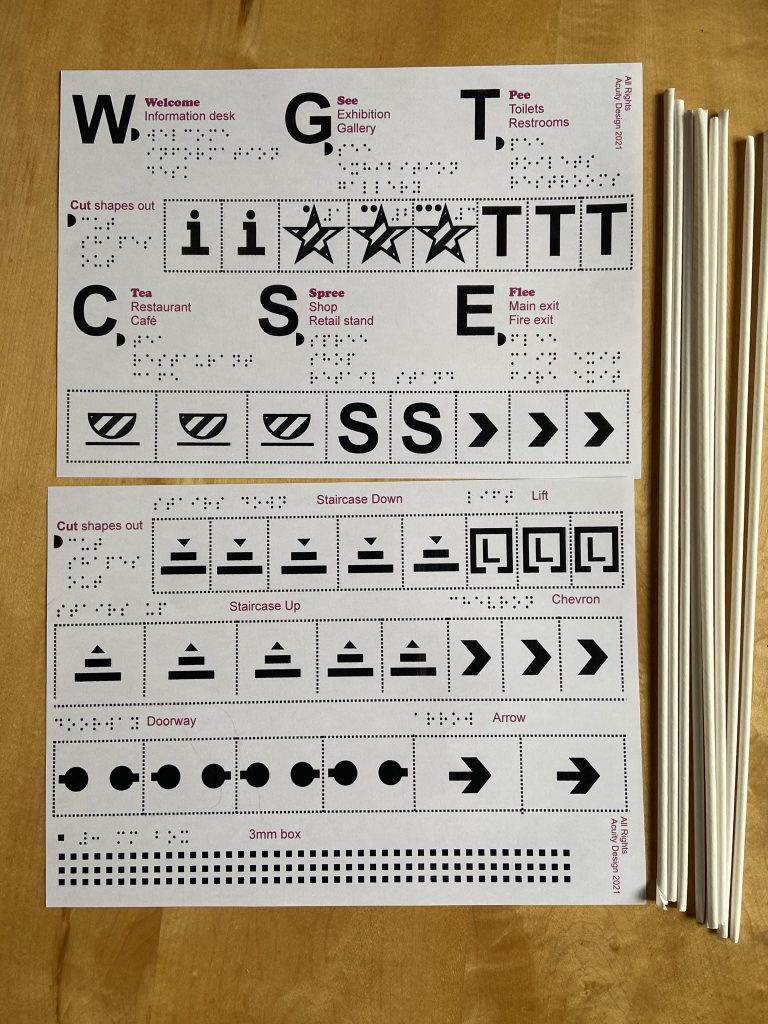
Maps help people both create a sense of anticipation and reduce a sense of anxiety about going to a new place. Offering different maps to people with differing physical and cognitive capabilities is offering a better welcome to more people.
Acuity Design creates a lot of tactile maps for blind people to use in transport hubs, museums and other public spaces. We work with clients to understand what needs to be communicated in a map (and what is better communicated thru digital audio or staff encounters). We work with people with a range of forms of visual impairment to ensure what is communicated makes sense and is useful. It is balancing what organisations think needs to be said with what visitors actually want to know.
Currently we are making some maps of York for English Heritage and, while doing some usability testing (maps posted out and then calls to chat about them), I was reminded of a workshop we did in 2018 at University of Bath on making a tactile map for your own place (museum, college, town centre, etc.).

This post is just an offer to run an online version of the Making Tactile Maps Together workshop for people who want to try and make something simple and useful now for when things re-open in the future. Skip to the end for date and cost.
Materials

Making a tactile map appears daunting and if nothing else I want to reduce anxiety about doing something that increases accessibility. Knowing what to do may seem the primary issue but actually it is better to start with what to make a map with first.
There are a vast array of technologies for making tactile maps. Just for simplicity’s sake, start with Swell Paper (also known as Zychem or Minolta). It’s a form of print where everything that is black (or quite dark colour) puffs up into tactile form. It is cheap, it is fairly readable by touch but it wears out quite fast. It is a good format to start with.
From 2018, I have sets of two A4 page Swell Print tactile map symbol sheets. I have updated them for 2021 with a few symbols that were missing in the Bath workshop.
Workshop participants get a set of these sheets to make a tactile map with. Having the materials posted to you in time for the online workshop is essential.
Wayfinding and Welcomes

The second thing to understand is what a map is trying to do. The concepts of Wayfinding are important here: what people seek to know and how they build cognitive maps both before and during a journey.
I have run many workhops in museums on understanding the moments of entering a new space and the emotional mixture of anticipation and anxiety. These moments are critical to everyone’s enjoyment of their visit but the information provided may be essential to some disabled peoples’ choice to make the journey at all. The welcome is what builds trust in the organisation, enables invitations to try out new experiences and creates the relationship to come back again.
For this part of the workshop, podcast-style audio packages (with text versions) will be provided. Two (maybe three) 10 minute audio guides about the ideas of wayfinding and welcomes to download and listen to when convenient to you.
Making maps
Finally, let us meet up online and make maps together.
90 minutes of chatting and crafting maps to understand better what works and what needs more work.
This time will not be full of me talking. More time will be spent on just making things, playing around with possible formats and showing off what we are all doing together. This workshop is about a social time together to create the confidence to try and then try again.
Time together
This is also about making together with colleagues so bring along onw or two to the online workshop for free. You can have a Zoom room to yourselves to chat and make things privately before sharing with other workshop participants.
Sharing maps
What we make together in the workshop is a first attempt at making a tactile map. The next step is sharing them with blind people and having conversations about what works, what fails and what they need.
Accessible design artefacts often fail. There are always differing capabilities, disabilities and desires that you have not encountered or considered. The point is to make something to enable conversations. The maps are questions – both for you asking visitors about what works and for visitors to ask about what is unclear or missing.
Want to come along?

The workshop offer is thus:
- Materials posted to you (Swell Print sheets)
- Audio podcasts to download (mp3 files on Dropbox)
- 90 minute online workshop (via Zoom) for you and up to two friends or colleagues
There are only 10 spaces available and participants must be in the UK (due to both Covid19 and Brexit postal delivery problems).
The online workshop is planned for Thursday 4th March at 14:00.
The cost is £45 (no VAT) and I can accept both bank transfers and PayPal. Send me an email and I will send a PayPal invoice for you to pay.
If you have any questions then contact me by email or on Twitter @acuity_design.